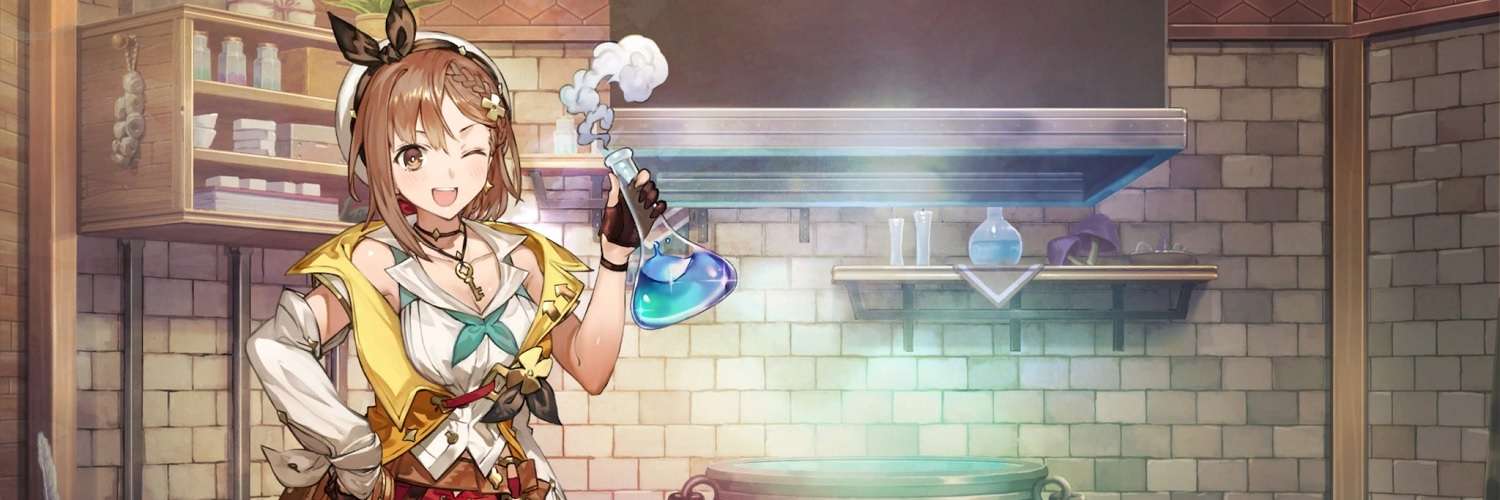
Atelier Ryza 2: Lost Legends & the Secret Fairy PS4 Review
Gust’s long running Atelier series keeps on delivering sequel after sequel with no stop in sight. This latest entry is the 22nd game in the mainline series for the light-hearted, alchemy focused, role-playing games. What is interesting about the history of this franchise is that Atelier Ryza 2: Lost Legends & the Secret Fairy – let’s call it Atelier Ryza 2 from now as that is a rather long title to keep typing out – actually manages to be the first game in the series’ 24 year history to use the same main character from a previous game to lead a sequel. This could be down to the biggest launch ever for the first game staring Ryza, Atelier Ryza: Ever Darkness & the Secret Hideout, and Koei Tecmo wanting to capitalise on this, or it could be the buzz around the design of the of main character, Ryza, which created a lot of fan art and cosplay on the Internet – seems to be a thing these days (see Resident Evil: Village‘s Lady Dimitrescu).
This sequel continues the story of Ryza’s adventure three years later. We find out that Ryza has continued her life as an alchemist on the island of Kurken, even teaching the ability to people, but is feeling that her skills could be even better. In the beginning of the game, Ryza is invited to the capital city of Ashra-am Baird by one of her friends, because another friend’s father has come in possession of a mysterious stone that he would like Ryza to research it. This leads to a local ruin that was discovered by Ryza’s friend, Tao, and somehow has an affect on the stone, revealing its secrets to Ryza and in turn kickstarting her adventure in the capital land with her returning friends. The game, just like the rest of the franchise, is one that is full of happy, cheery characters, a feel good game to play when you just want a bit of joy in life. Every time I come to playing an Atelier game, it is the same fruitful of happiness that I feel from them. It’s a nice thing to feel from a video game.

One thing to note, which is probably helped that this is a direct sequel relating to the character, is that while the beginning of the game does have a slow story build up, the game itself does work faster in getting the mechanics up and running without much waiting. It’s core elements of combat, dungeon exploring, crafting through alchemy, side quests, and non-player character story interactions are introduced early on, so players are getting into the mechanics faster than before. You will be way into the second ruin (dungeon) within the first seven hours of the game, which at that point both returning systems and new features will have been presented, bar back up character interactions in battles, which come when a fourth member joins soon after. The quick start up gives Atelier Ryza 2 that sense of direct focus on getting things running from the get go rather than spend hours slowly bringing in elements that fans will already know from Atelier Ryza. That is not to say that newcomers will be lost, there are still tutorials here explaining the systems, but existing players will get more reward from the returning characters, continuing story beats and references to the first Atelier Ryza.
Atelier Ryza 2 can be broken down into a few core elements that make the game. These are exploring, crafting, fighting and communication. The latter comes in form of many small interactions with the characters of the capital, with the map signalling question marks or character portraits in areas that have these bite size chatter scenes. Elements of these are related to side quests, such as helping the townsfolk in exchange for free rent in the atelier. Some are more world and character building, but then there some small scenes that feel included for the sake of having more dialogue to move away from the rest of the game’s content. Sure, there are some amusing moments here that are irrelevant to the main plot or some side content – this is characters being joyous and fun – but some of it does bloat the experience, which some players might find annoying. Personally, I enjoyed most of the distractions, mainly for the silliness involved in them, but people who don’t like their main plot line broken up by nonsense will want to stay clear or skip over these scenes.
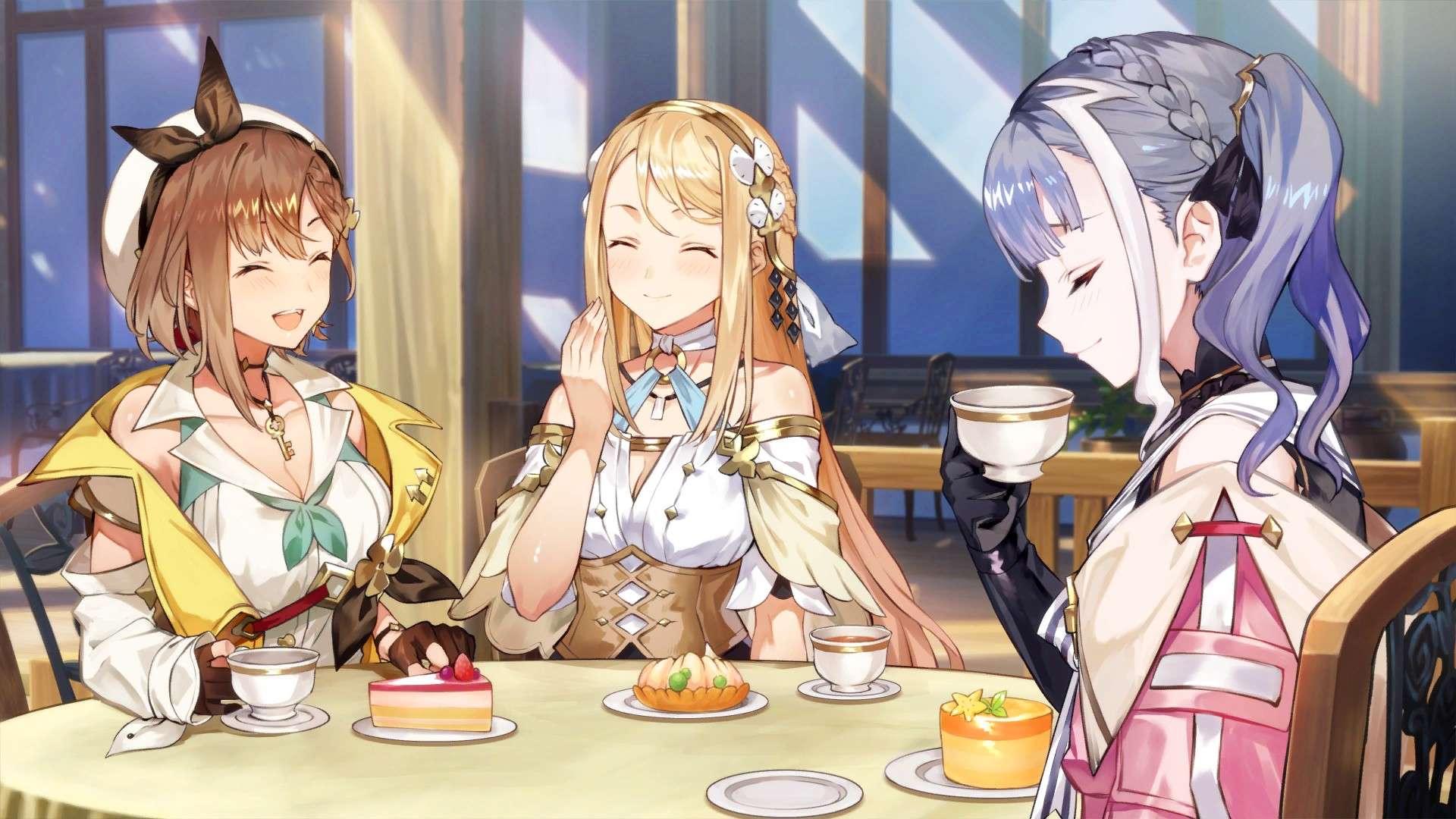
Exploring has been given some extra love this time around as the environments are given some height to go along with the new tools Ryza has that enable more interactions with the world. She can now swing across gaps with a rope, swim underwater, climb highlighted walls and even gain a mount that allows to hunt down special gathering spots or travel faster through an area. The catch is that you still need to get off the mount when wanting to gather items for alchemy. The game still follows the pattern of locations opening up on the map that can be fast travelled to and then running around these environments to progress to newly unlocked areas or just for gathering some materials to use with the alchemy system. It is that now these locations are more exciting to explore, a bit more involving than simply running around, and while these features aren’t exactly ground breaking (pretty much standard feature in video games), the ability to swing or swim helps switch things up by bringing variety to a series that has often had simple locations to wonder in.
These abilities are thrown into the game’s dungeons (ruins), that bring those same improvements to spice up the exploration of the game’s secret ruins. Each Ruin follows a pattern that the player needs to walk around to reveal to map. At some point, the tool that Ryza has, dubbed the Compass of Recollection, activates and memories appear scattered around the ruin that need to be collected. These memory vestiges are added to a collection and need to be utilized to fill in missing descriptions in the menu that explains the history of the ruins, a puzzle of sorts that offer short readable descriptions, which need to be linked to the full paragraph in the memory vestiges. It is a simple inclusion, but it adds a discovery element to revealing secrets in these old areas that haven’t been accessed for hundreds of years. It acts as an interactive way to do world building and offer some optional insight into the history of this game’s story and hint at what could be coming up in the game’s plot. Fulfilling these memories are a worthy benefit to Ryza too, as the matches unlock more resource points for the alchemist skill tree, which gives Ryza more items and bonuses to her crafting in her atelier home.

Ryza’s adventure, be it running around the map or in one of the game’s ruins, is filled with monsters that freely roam. Getting touched by one of these will initiate combat. Like a lot of modern JRPGs, if you manage to get a hit on the enemy before it touches Ryza’s character model, then depending on what gathering tool was used to strike the foe a debuff will be activated – axe reduces defence, sickle reduces attack, bug net reduces speed, and bomb rod deals a bit of damage to the enemies. If the party is a high enough level, then enemies will try avoid the player rather than engage in combat, probably fearing for their life as a powerful Ryza approaches them.
Combat has the player controlling one character while the other two party members are controlled by the game. There is also an out of party assist who can switch between any of the three party members during battle if they are alive, which also adds a bonus attack on entry. The mechanics make for an easy to understand battle system that is a mixture of time bar, real time inputs, tactics level and action points/core charge points management. Characters cannot attack until their wait time is filled. Once this is achieved, the player can string off a simple 3 hit basic attack that does not consume any points.
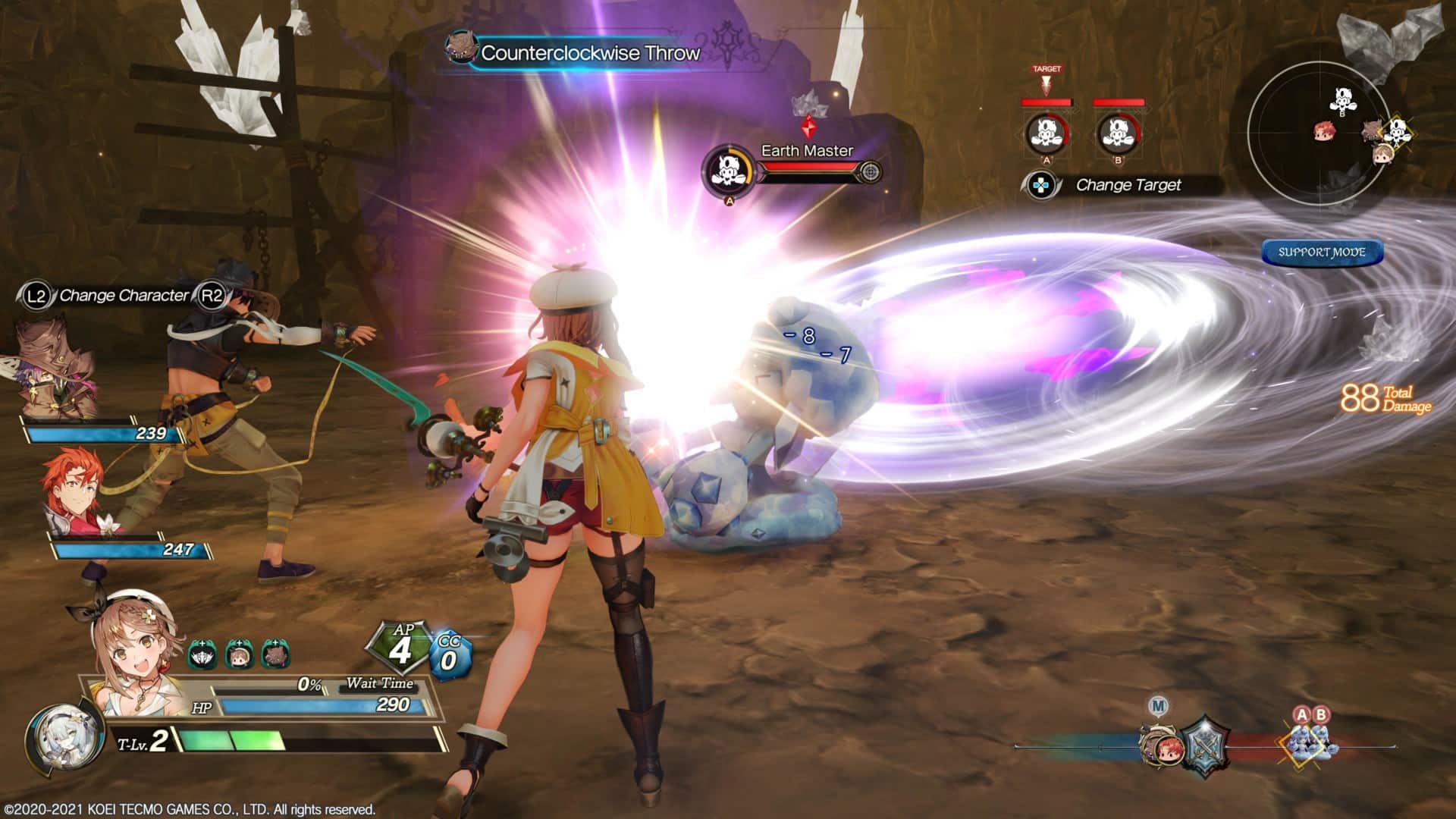
Doing basic attacks will build up action points, which are used to cast skills. In turn, casting skills increases the tactics level bar, which each new level buffs skills and enables additional combo hits to the standard attack. Skills can be used on their own, but is a waste to do so, as the best situation seems to be stringing them at the end of a standard attack combo. Skills use their own action points to consume, they can be used to extend the combo to deal most damage in a single turn. Defending attacks can be done any any point, and doing a successful perfect block against an enemy attack rewards more action points. One problem is that the camera view does not help with grouped enemies, since it focuses on the target, it makes it hard to see if another enemy is attacking you, so keen eyes are required to see it pop up behind the controlled character model to defend at the right time.
Battles might sound complicated, but they really are not. It helps that you do not have to manage the other two characters in the party. There is an option to jump to them to manual control, mainly to get them to heal themselves with equipped health items, but the player is only ever controlling one character in battle. During fights, other party members will occasionally have text next to their info, something like “Use physical attack” or “Use magic attack”, this is the CPU signalling the player to perform one of these actions so that the character can follow up with their own skill attack. These are time limited, so making sure to notice them and acting upon them is key for dealing good damage per turn, in essence making sure they are all working together to get the most out of it.
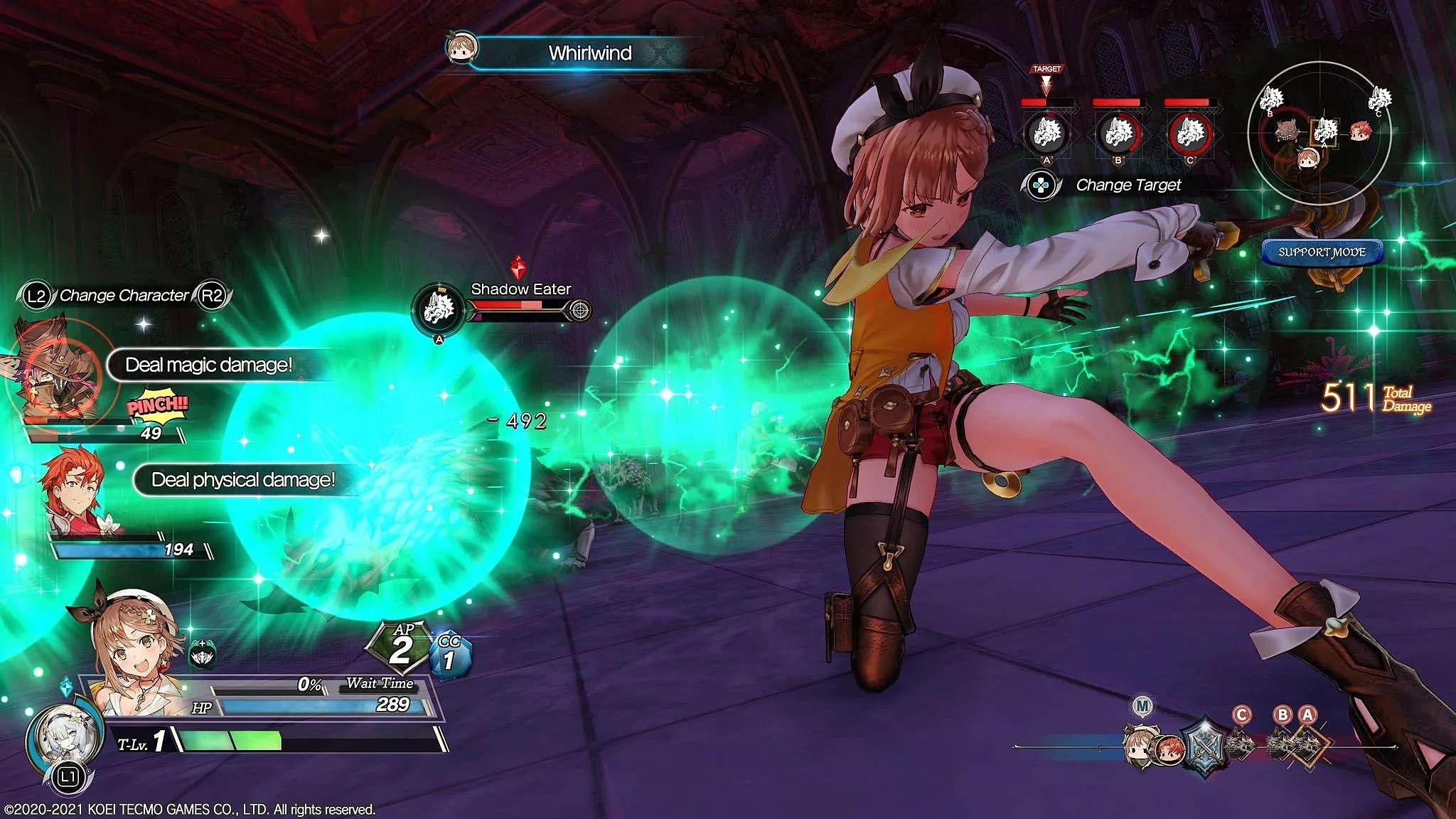
There are occasions further in the game where the speed of the battles helps along with the some grinding required to pass some of the difficult enemies and boss fights, but this also puts into light how importance the latter element of Atelier Ryza 2 is, the crafting, and how it intertwines with everything – battles, gear, items, story, side quests. One thing I did not like is that healing is only done within battles and cannot be done outside. The way to heal is to return to Ryza’s home, which heals all party members. Thankfully this can be done anywhere by teleporting back, and most areas are split so that fast travelling back is available to get yourself back into the action without much time wasted.
Alchemy is the heart of the Atelier series. It is the centre for making better gear for the party members, fulfilling side quest demands and having items to help heal or assist in battle. Items are scattered all over the landscape to be picked up to be used for ingredients in alchemy, while some shops also sell items as well. Shops can be improved by giving a character categorised materials to exchange for experience into the stores, which in turn helps them have more items and quantities for sale. It might seem a hassle to have to keep gathering items while exploring the world, but the motion to gather is speedy, and as Ryza’s skill tree grows, the ability to gather more items at once from a gathering spot increases.
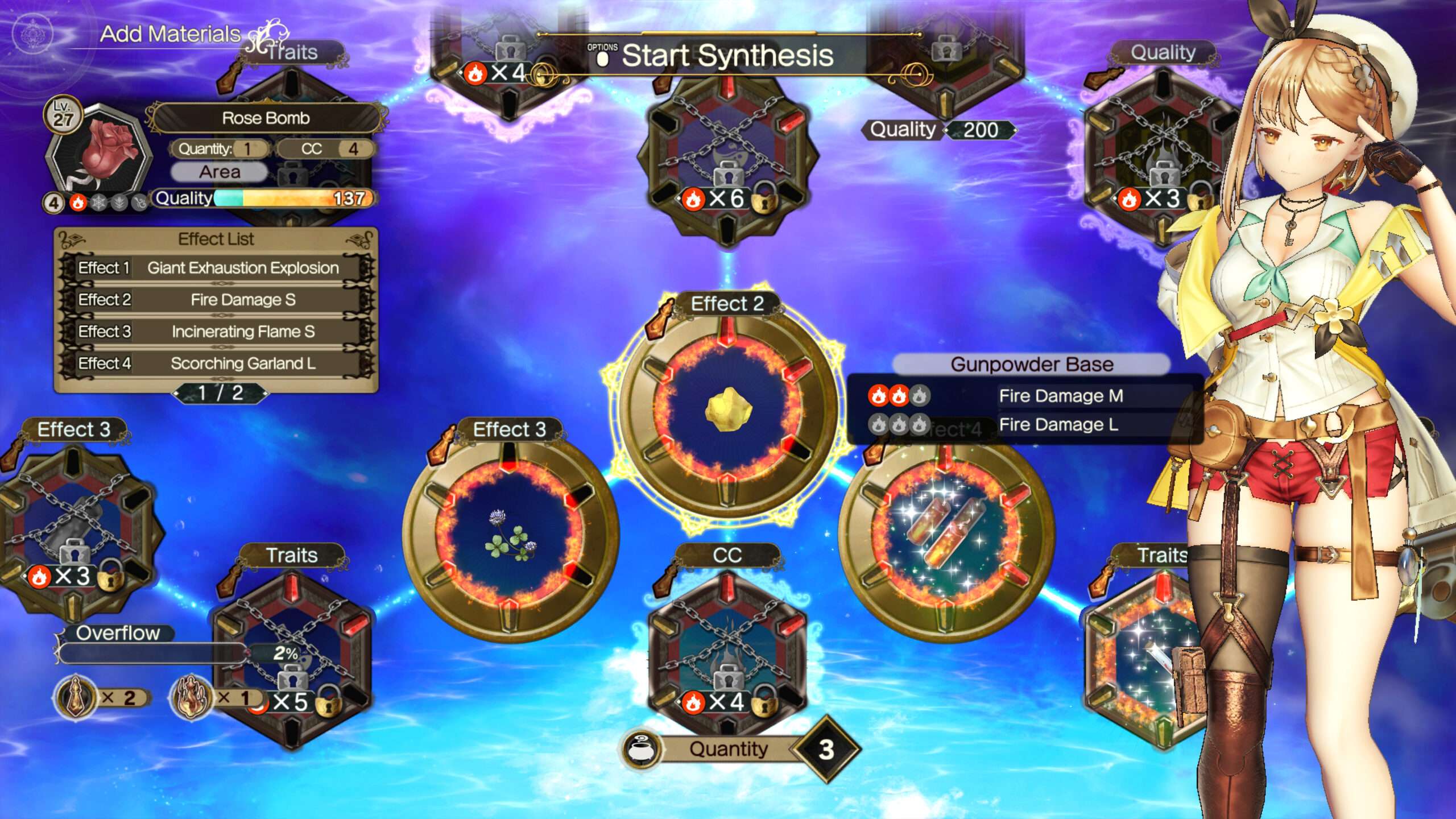
Making items gives points to spend on the alchemy skill tree, which unlocks additional features (better quality items, more items per craft, etc.) or new items to make. Quality of items are based on the quality of materials used (a number informs the user of quality), with bonus attributes added to the item to make it improved over a low quality version. Crafting items in the cauldron is done by feeding ingredients required in the ingredient wheels that the item’s recipe is based upon. This can be a little time-consuming, so if one just wants to quickly create something that either is of low or high quality, an automated process can be done that will quickly throw in all the items and synthesize some good items. I ended up doing 90% my alchemy this way after a few hours into the game, as it never seemed to handicap my requirements, and really, the only time you need to do it manually is when wanting to morph an item into a different one.
A thing to note is that the Atelier series has always been made on a smaller budget compared to some of the bigger JRPGs on the market. Due to this, there are elements that reveal the restraints the developers have. The main one is enemy variety is rather limited, simply going for recoloured enemies with a few changes to their core design to make them different. Environments, while improved for the better, are still flat in terms of texture work, but that is down to the game’s art style, which is full on anime aesthetics, something the franchise has always gone for. It is no doubt pleasant to look at, and performance is consistent for 99% of the time at 30fps on PS4. It’s a clean and sharply presented game that while does not push the system, it’s style works just fine for the game it is. The voice over is strictly in Japanese, again, a way to cut costs, but it also manages to shrink the release date gap between the Japanese and English release. I am happy for this to happen if it means sacrificing the English dub.
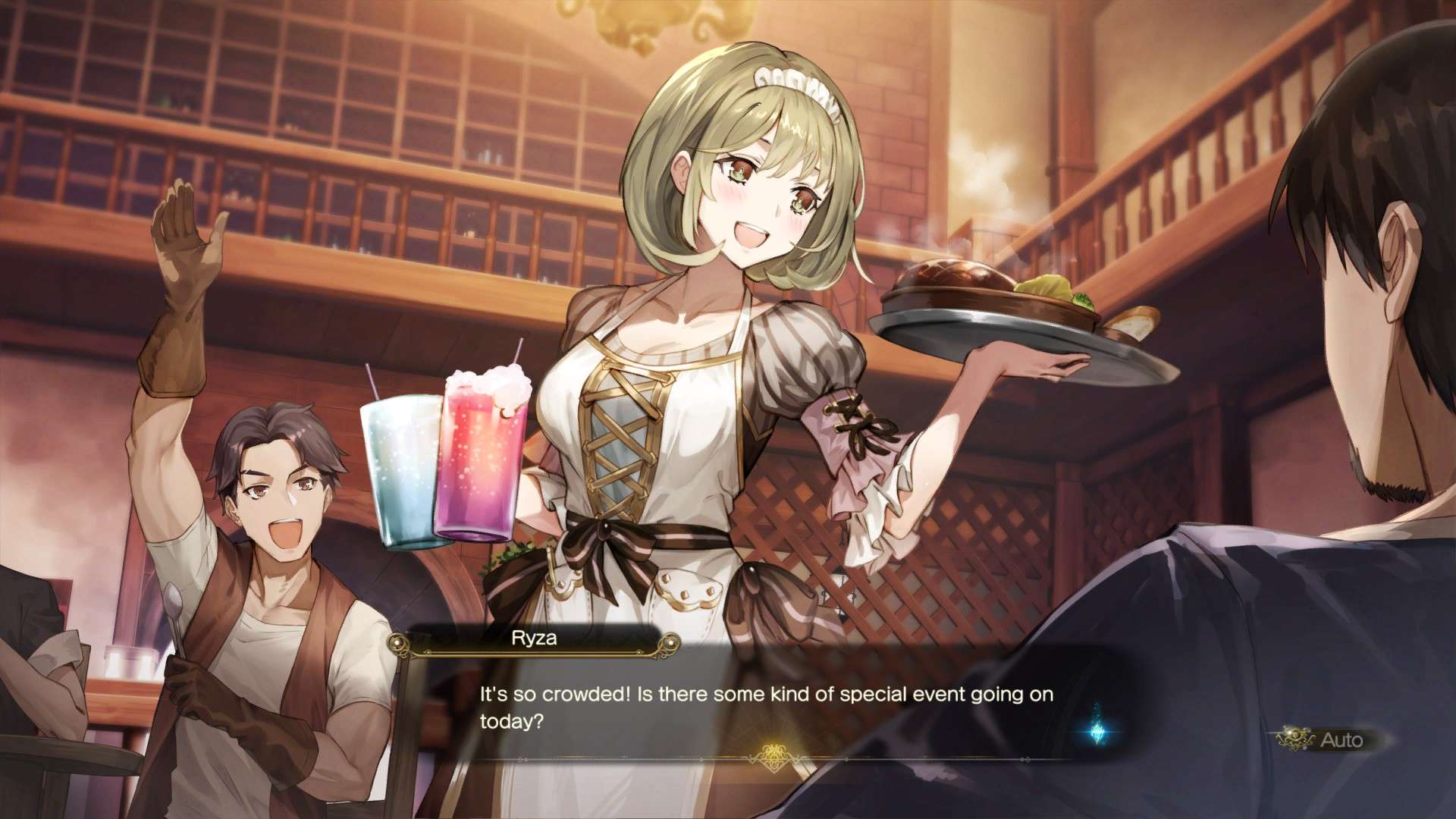
Atelier Ryza 2: Lost Legends & the Secret Fairy‘s core elements come together to make for understanding and engaging friendly JRPG. It has the option to automate complex elements and the battle system can be grasped early on without hours of learning, helped with the solo focused action. Whoever you are, the game wants you to enjoy its charming story and over-joyous characters. While there are some points where the plot can be interrupted, due to all the bite size dialogue squeezed into the the adventure, and there are signs of budget restraints in its game design and enemy variety, Atelier Ryza 2: Lost Legends & the Secret Fairy still makes for an entertaining time with a series that keeps adding additions to expand over its many game entries.
